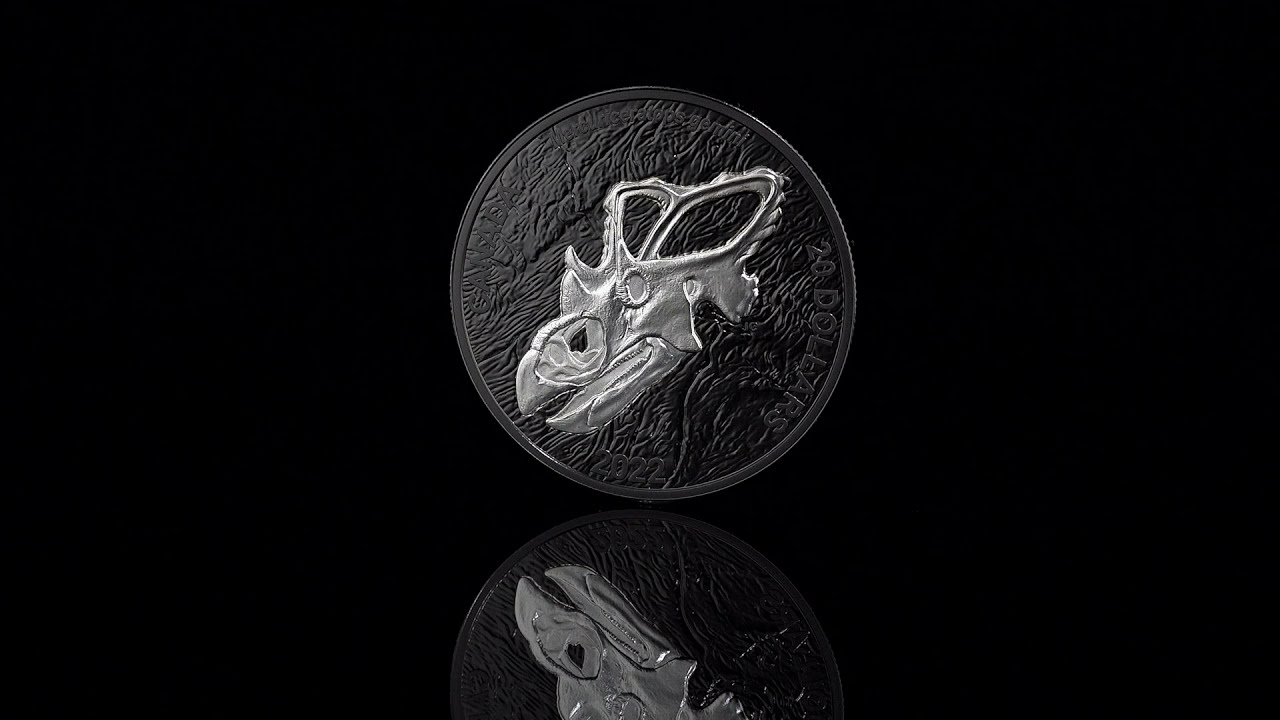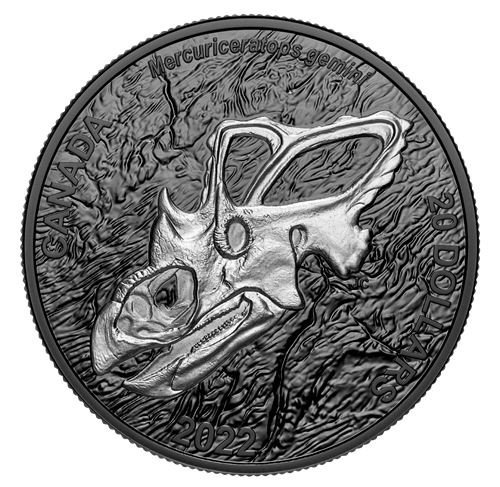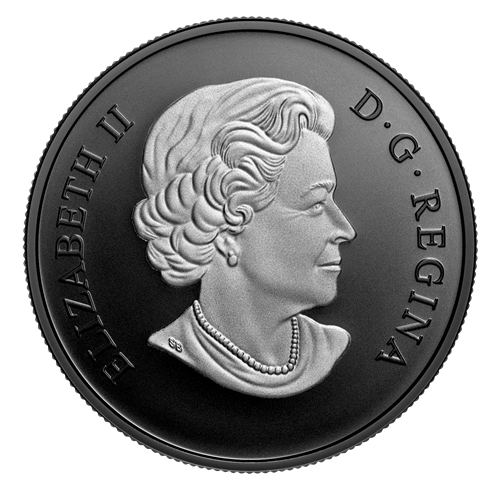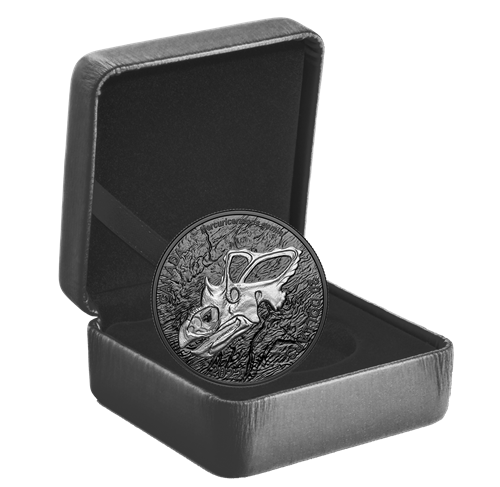
ARCHIVED
1 oz. Pure Silver Coin – Discovering Dinosaurs: Mercury's Horned Face
2022
Mintage 10,000
ARCHIVED
1 oz. Pure Silver Coin – Discovering Dinosaurs: Mercury's Horned Face
2022
Mintage 10,000
$109.95 CAD
Masters Club:
1,100
Status: CAN & US shipping only
Availability:
Out of stock in stores
About
Discover a dinosaur with bony "wings" on its head.
A follow up to 2021's Reaper of Death! Mercury's Horned Face or Mercuriceratops gemini is the featured star of our second Discovering Dinosaurs coin, and the first things you'll notice about this ceratopsid are the bony, wing-like protrusions on its head.
Engraved on the coin's reverse, its skull fossil is especially striking against the black rhodium-plated "rock" background, which pays tribute to the discovery that yielded another piece of Canada's prehistoric past.
Coin #2: Meet a relative of Triceratops.
- By popular demand. Imagine the excitement of unearthing a new prehistoric species! The follow up to 2021’s sold-out Reaper of Death coin, the second Discovering Dinosaurs coin places you in the field and at the site of another discovery.
- “New” dinosaur. Like the tyrannosaur on the first coin, this horned dinosaur is a relative “newcomer”—the 76-million-year-old Mercuriceratops was unveiled in 2014 and has never appeared on a coin until now.
- For dino lovers of all ages. Dinosaurs are a popular theme with collectors and Canadians of all ages. They're also an important part of Canada's natural heritage.
- Includes serialized certificate. The Royal Canadian Mint certifies all of its collector coins.
- No GST/HST
Packaging
Your coin is individually encapsulated and presented in a Royal Canadian Mint-branded clamshell with a black beauty box.

Features

Rhodium plating
The black rhodium background represents the hidden or unknown past. This dark design element keeps the focus on the engraved fossils that have helped paleontologists piece together the story of prehistoric Canada.

Scientifically verified
The fossil depicted on your coin has been verified forscientific accuracy by the Royal Tyrrell Museum of Palaeontology.

Engraved texture
Beneath the rhodium plating on your coin’s reverse, the engraved texture represents the thrill of discovery: it resembles the rock formationin Alberta’s Dinosaur Provincial Park, where a Mercuriceratops skull fragment was found.
Specifications
Product Number
203129
Mintage
10,000
Composition
99.99% pure silver with selective rhodium plating
Embellishments
Plating
Weight
31.39 g
Diameter
38 mm
Edge
Serrated
Certificate
Serialized
Face Value
20 dollars
Finish
Matte proof
Design & Artist

Reverse
Julius Csotonyi

Obverse
Susanna Blunt
Designed by Canadian paleoartist Julius Csotonyi, the coin’s reverse features the fossilized skull of Mercuriceratops gemini, a recently discovered horned dinosaur species. Beneath the black rhodium plating, the engraved texture represents the rock formation in Alberta’s Dinosaur Provincial Park where a key fossil fragment was found. The obverse also features rhodium plating behind the effigy of Her Majesty Queen Elizabeth II by Susanna Blunt.
Reviews
Questions
What do you want to know about this product?








